RudderStack
The RudderStack modules allow you to identify, track, and group users in your RudderStack account.
Getting Started with RudderStack
Prerequisites
A RudderStack account
In order to use RudderStack with Make, you must have a RudderStack account. If you do not have one, you can create one at rudderstack.com.
Note
The module dialog fields that are displayed in bold (in the Make scenario, not in this documentation article) are mandatory!
Connect RudderStack to Make
Log in to your RudderStack account.
Navigate to Connections, then click Add Source.
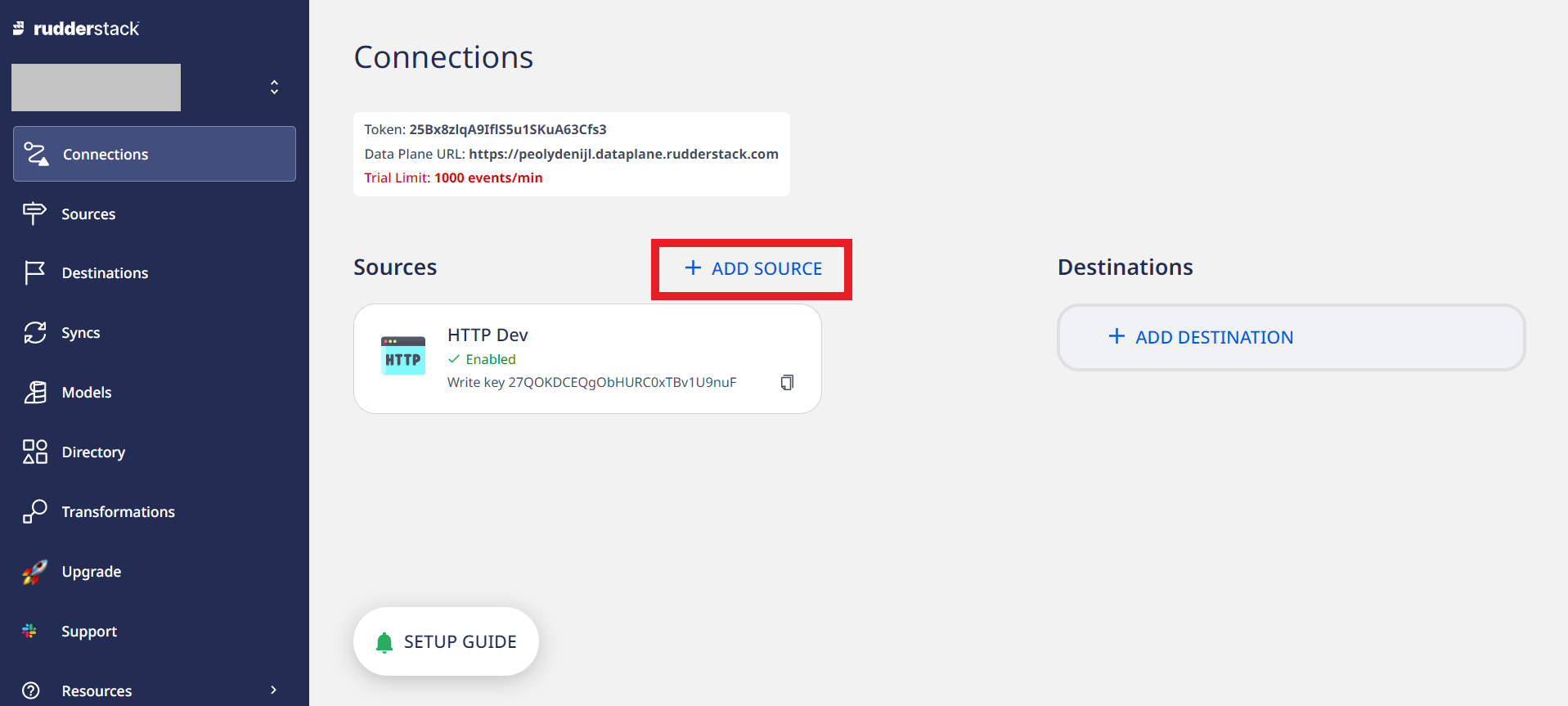
Select HTTP from the list of sources.
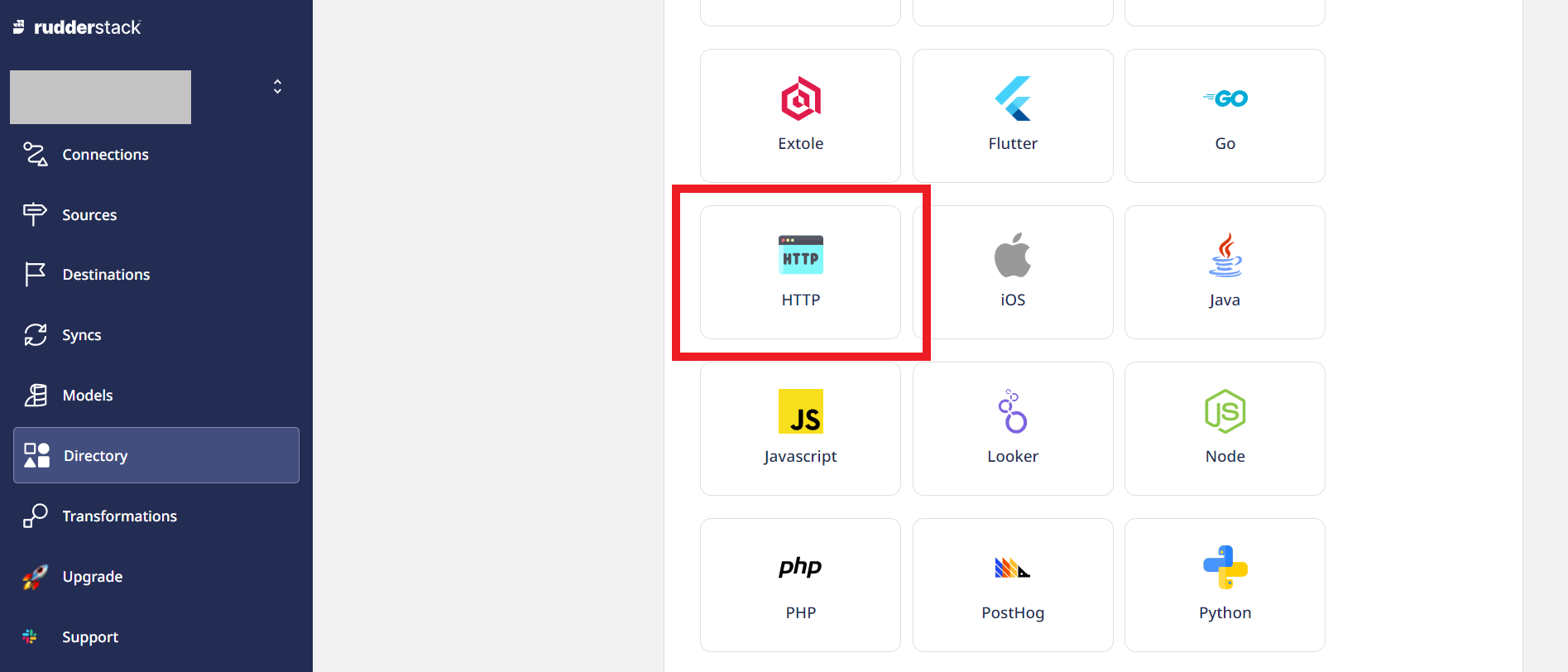
Name your new source.
Copy the source Write key to your clipboard.
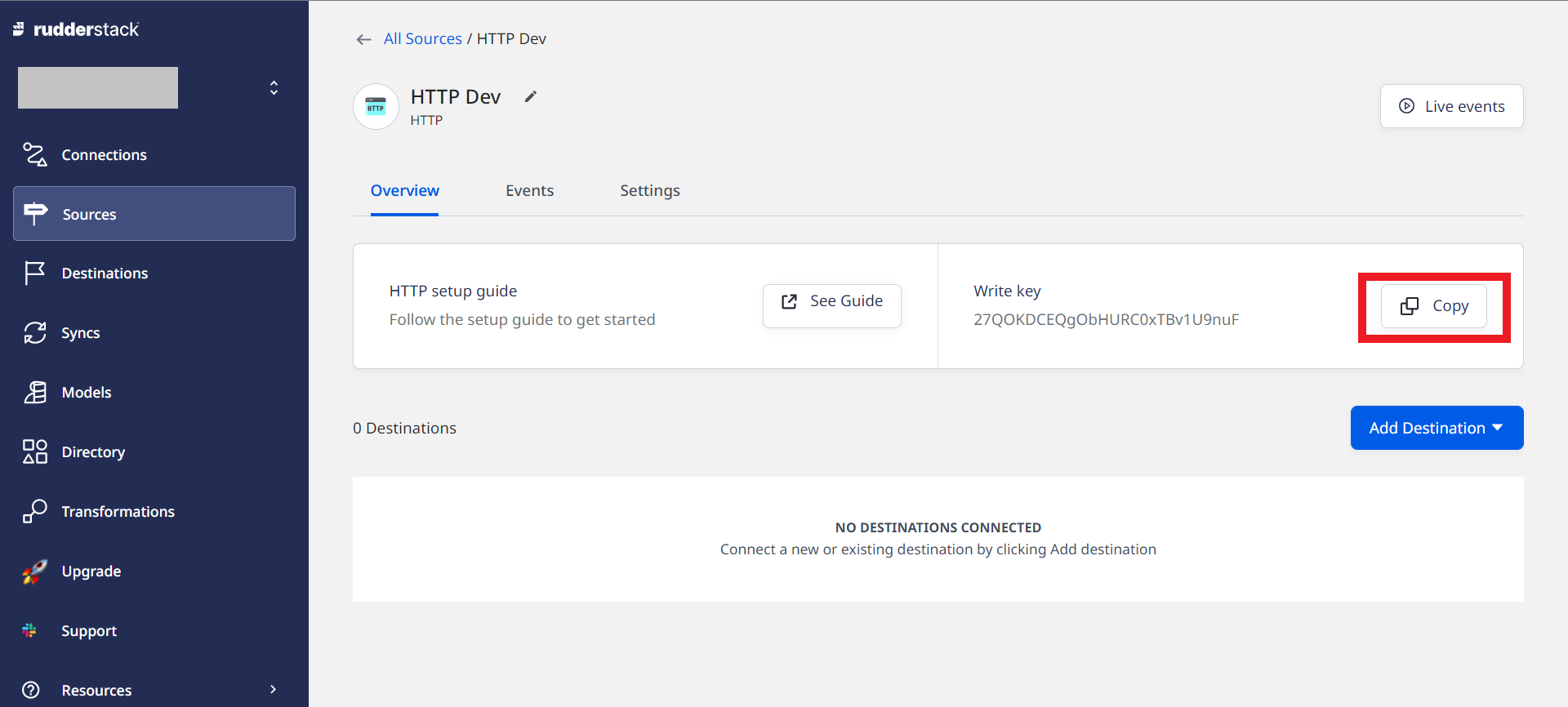
Go back to Connections, and copy the Data Plane URL to your clipboard.
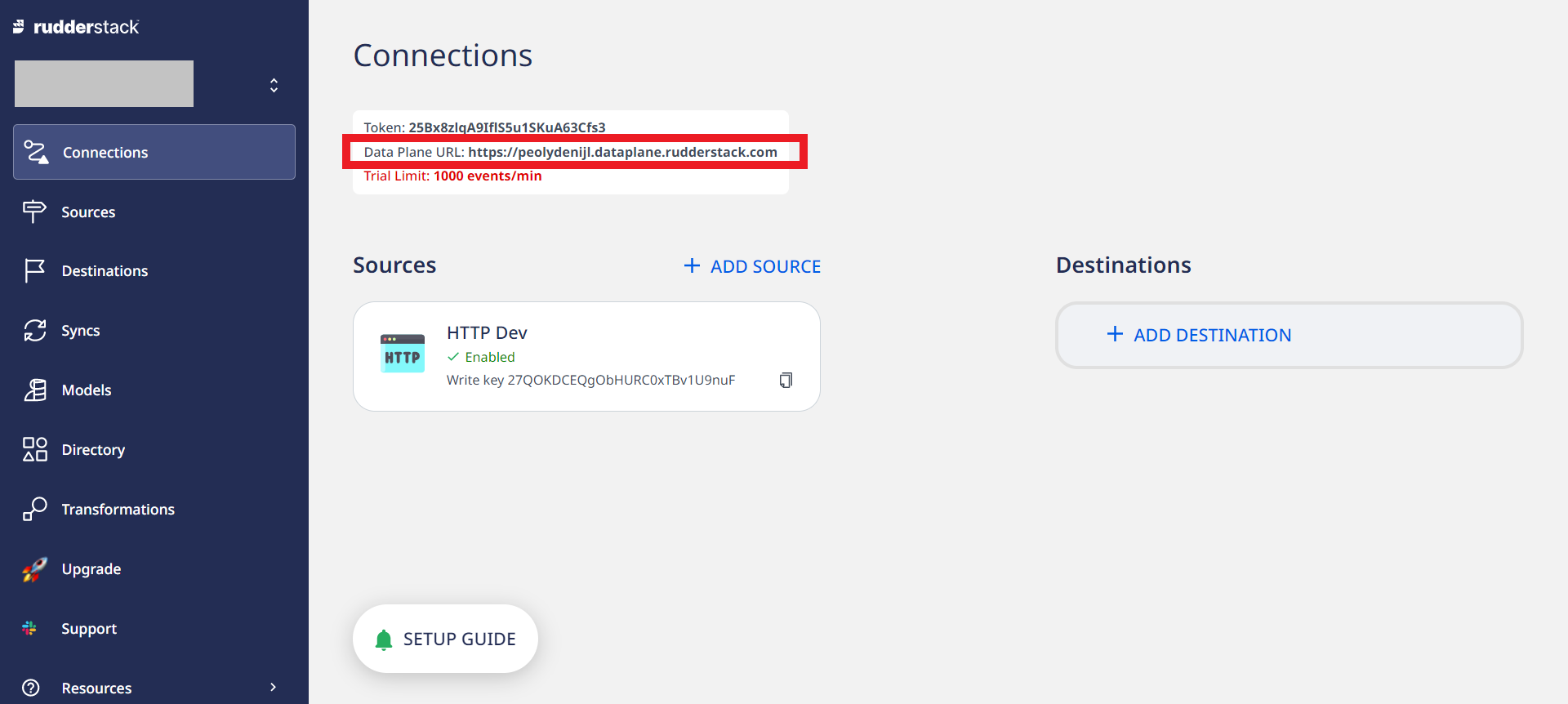
Go to Make and choose the RudderStack module you want to use.
Next to Connection, click Add.
Name your connection, then enter the Data Plane URL and Source Write Key in their respective fields.
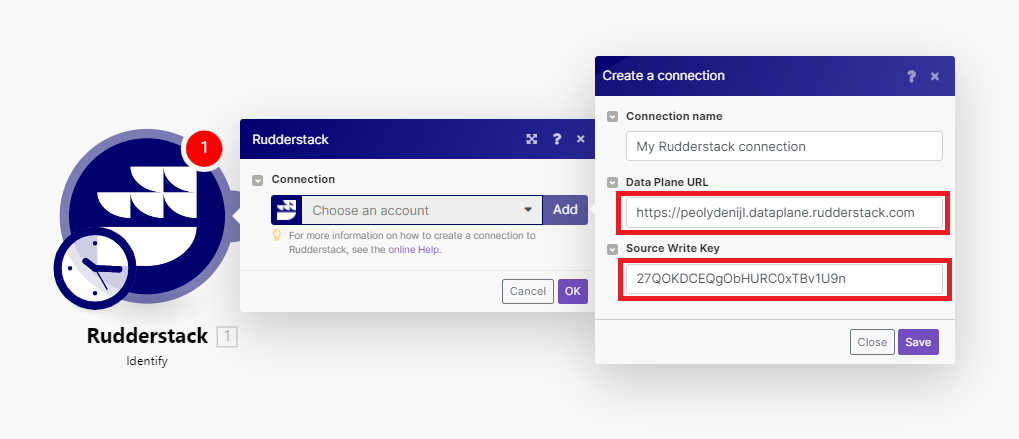
You have successfully established the connection.
Actions
Identify
Identifies a user.
Connection | |||||||||||||||||||||||||||||||||
User ID | Enter the id for a particular user in your database. NoteRequired, if Anonymous ID is not present. | ||||||||||||||||||||||||||||||||
Anonymous ID | Enter the user id for cases where there is no unique identifier for the user. | ||||||||||||||||||||||||||||||||
Timestamp | Enter the timestamp of the message's arrival. See the list of supported date and time formats. | ||||||||||||||||||||||||||||||||
Traits | Add any additional traits of the user.
| ||||||||||||||||||||||||||||||||
Custom Traits | Add any custom traits. NoteThe custom trait names should not match the trait names above. | ||||||||||||||||||||||||||||||||
Write Key | Enter the write key of the source. This will override the write key in the connection for this module. |
Track
Records a user's actions.
Connection | |||||||||||||||||||||||||||||||||||||||||||||||||||||||||||||||||
Event Name | Enter the name of the user action. | ||||||||||||||||||||||||||||||||||||||||||||||||||||||||||||||||
User ID | Enter the id for a particular user in your database. NoteRequired, if Anonymous ID is not present. | ||||||||||||||||||||||||||||||||||||||||||||||||||||||||||||||||
Anonymous ID | Enter an id for cases where there is no unique identifier for the user. | ||||||||||||||||||||||||||||||||||||||||||||||||||||||||||||||||
Timestamp | Enter the timestamp of the event. See the list of supported date and time formats. | ||||||||||||||||||||||||||||||||||||||||||||||||||||||||||||||||
Properties | Enter any additional properties associated with the event.
| ||||||||||||||||||||||||||||||||||||||||||||||||||||||||||||||||
Custom Properties | Add any custom properties. NoteThe custom property names should not match the property names above. | ||||||||||||||||||||||||||||||||||||||||||||||||||||||||||||||||
Context | Select whether to activate any additional contextual fields. These fields give additional useful context about a particular event.
| ||||||||||||||||||||||||||||||||||||||||||||||||||||||||||||||||
Write Key | Enter the write key of the source. This will override the write key in the connection for this module. |
Group
Associates an individual user with a group.
Connection | |||||||||||||||||||||||||
Group ID | Enter the id of the group, as present in your database. | ||||||||||||||||||||||||
User ID | Enter the id for a particular user in your database. NoteRequired, if Anonymous ID is not present. | ||||||||||||||||||||||||
Anonymous ID | Enter the user id for cases where there is no unique identifier for the user. | ||||||||||||||||||||||||
Timestamp | Enter the timestamp of the message's arrival. See the list of supported date and time formats. NoteIf the event just happened, leave it out and we’ll use the server’s time. If you’re importing data from the past, make sure you to provide a timestamp. | ||||||||||||||||||||||||
Traits | Add any additional traits of the group.
| ||||||||||||||||||||||||
Custom Traits | Add any custom traits. NoteThe custom trait names should not match the trait names above. | ||||||||||||||||||||||||
Write Key | Enter the write key of the source. This will override the write key in the connection for this module. |